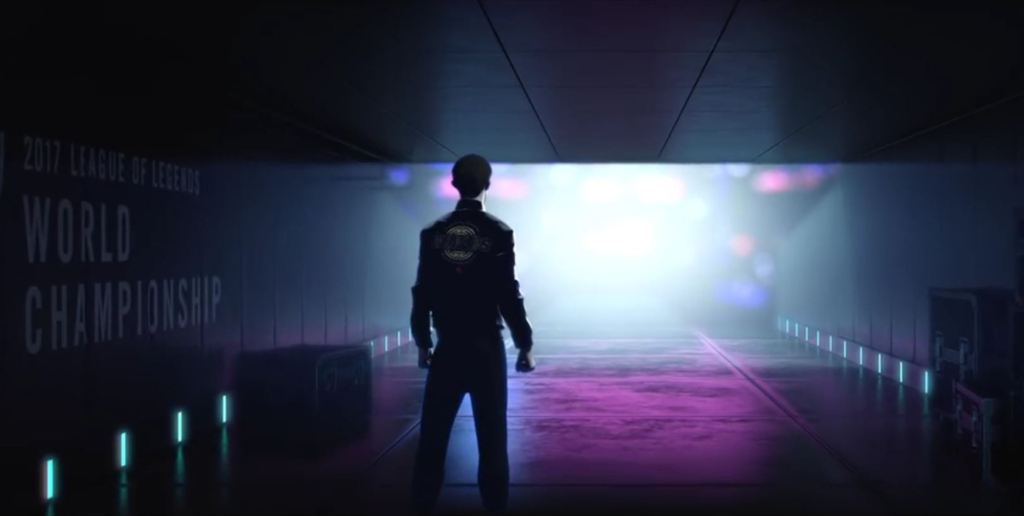Building Esports Content

Building Esports Content
Esports are a big part of what we believe in. In fact, EKGaming stands for the Electronic Kingdom of Gaming mostly because of how esports use both Electronic and Gaming. So it’s pretty obvious we are huge fans, but what isn’t as obvious are the steps we’ve taken to try and create a good environment for esports.
We started with trying to do one thing right. We didn’t really know what it was, but we started there. We asked, “What do we not see that we want to see?” The answer was that we didn’t see player and team pages the way we would have liked. It seemed harder than it should be to see who was playing for what teams. It seemed harder still to find out specific data about players and teams.
So step 1 was figuring out where to start. This decision seemed pretty easy – we would start with one esport and get it exactly right. So we started with the biggest name in the game, which also was the game that had the best data available.
League of Legends
This decision was really a no-brainer. No other esport comes close to League of Legends in data retention, and that’s because Riot owns and controls every part of the game. Riot is the only company where it is all in-house – the analysts, casters, and tournaments are all run completely by them. It makes pulling data much, much easier. So we started with them.
The next step was trying to make quality, comprehensive player and team pages. We felt it was a little unfortunate that the most quality source out there is in community run sites like Leaguepedia. It isn’t that we don’t love their content – but we really hate that it had that wikipedia appearance to it and nothing was customized for players or teams.
So we started building.
Team Pages
We started here, and we made plenty of mistakes along the way. The biggest question was what did a fan really want out of a team page? As far as we could tell, it started with score and standing, then it was players, and then it was news. So we tried to prioritize those things. Scores, rosters, news.
We started off wanting to show current standing as well as their recent matches and their current roster. We actually wanted to include the full active roster with substitutes and all, but funny story – almost no team has updated versions of that information. Esport teams are notorious for benching players and getting new ones with little ceremony, and sometimes discussions to get new players happens before anyone can react.
The fact is, the only way that makes any sense to list teams is to list the one playing right now. If we did it any other way, some teams would have 5 players, some would have 7, and some would have 9. 2017 was the best example of this because Echo Fox had two members for every role, and they had them all listed. Other teams, like CLG, only had one or two substitutes. For consistency’s sake, we had to do just the players in the games.
We also wanted each page to look slightly different but slightly the same, and we wanted to represent it all coherently on mobile. It has been… harder than we thought.
Player Pages
We spent a long time here. We tried formats that had “favorite champions” and we tried “most played champions” and we tried “most recent champions”. We really wanted that data because it’s such a big part of games. It seemed like a major factor that set esports apart was Champion selection, but we discovered that for individual players, that just wasn’t interesting. The fact that Huhi is a monstrous Aurelion Sol player is awesome, but he almost never gets to play that champion. Also, he plays what the coach or the team needs, not what he wants.
Unlike solo queue, professionals’ champions usually fit the meta, or they fit the need. That means that the reality is that a toplaner for any team will be playing what everyone else is playing. So all a “favorite champion” type thing does is let people know what the meta is. While that’s interesting, it didn’t seem like it should be on the player pages. In fact, it felt like it was having the opposite effect we wanted from player pages. It made all the players seem similar, more similar than they really were, and we hated that.
Instead, we focused on raw player stats, on information like their position, and on things like their personal social media and videos. We wanted player pages to feel like they were about the player, and the best way to do that is to see the stuff Sneaky is posting on Twitter or to just watch Doublelift play some games on Twitch. As fans, and as creators, this data seemed truer to who the players were – and their style – than anything else.
We are still working on things like biographies, but we are looking to do it the right way, in a way that makes sense for esports.
What’s Next?
We are never going to stop double-checking our work. We think we’re done, but with so many people working on pages, tweaking them, and updating them, stuff gets lost in translation. First things first, we need to make sure our League of Legends Team and Player pages look good.
Next, we want to make it easier to see standings for esports, so that is getting added to the Esport section under a spoiler. It’s an easy call, and it takes little time to do. If it offers even a tiny value for fans, it’s worth it for us.
So the next thing is expansion. We want to start building out more Player and Team pages for other esports, and we want them to be just as interesting. Unfortunately, some esports – namely Dota 2 and CSGO – do a really bad job reporting their numbers. Without the centralization that Riot brings, there can be misinformation and late updates, and there is. A lot of it. So we are going to expand where it make the most sense. That might mean Overwatch, Right now, it’s the only esport with the same degree of cohesion as League of Legends, so it’s the one that makes the most sense.
We are also constantly working on things like bracketing and tournament reporting, which can be hard to make compelling and unique. In fact, sometimes, fans prefer bracketing to be more straight-forward than compelling, and that’s something we struggled with as well. We wanted to do something different only to discover it did a worse way of conveying the information. We worked our asses off to get something nice for Worlds 2017 only to discover it was unique and confusing. We’ve tried to go back to a simpler more straight-forward system.
Last of all, we are hugely interested in the college scene for esports. Not only is it growing at a crazy rate, but it offers a huge fertile ground to find new players and talent. To that end, we are currently working on trying to connect with colleges and find a fun, good way of reporting and representing them.
We don’t expect to ever be done with esports, and as we grow, we expect to be able to offer more, but those are baby steps.
Until next time,
KingTon


